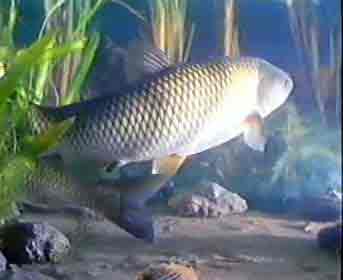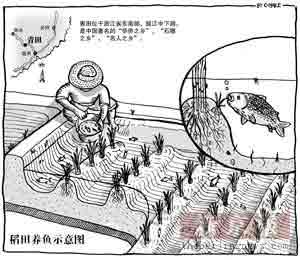On June 9, the age-old Chinese tradition of rice-fish farming was formally accorded world agricultural heritage status by the Food and Agriculture Organization of the United Nations (FAO).
In addition and even more significant is that Longxian Village in Qingtian County, Zhejiang Province, where rice-fish farming is practiced, is the first agricultural area to be given protected status under the Globally Important Ingenious Agricultural Heritage Systems (GIAHS) Project that was launched in 2002.
According to the FAO, the GIAHS project aims to protect traditional agricultural systems, practices and techniques, and associated landscapes that are under threat.
Chinese agricultural experts welcome the protected status accorded to rice-fish farming, not least because it is in severe danger of extinction with many farmers leaving the trade altogether, and the challenges posed by agricultural modernization.
The Longxian Village symbiosis
The tradition of rice-fish farming in Longxian Village dates back some 1,200 years.
The farmed fish is called tianyu, a type of carp with white, black, red and yellow colorations.

Tianyu fries are thrown into rice fields at the end of February each year when water temperatures rise above 10℃ and are cultivated in September before the rice harvest.
The village currently has over 396 mu (26.5 hectares) of rice fields.
It is a symbiotic relationship between fish and paddy. Fish waste and the carbon dioxide they expel provide invaluable nutrients for rice seedlings. Likewise, naturally occurring organic vegetation and pests in the rice fields provide the fish with a constant supply of food and shade. This is especially vital for subsistence farmers who manage rain fed systems.

This method of farming is also popular in a few places in Jiangsu and Guangxi Zhuang Autonomous Region.
A dying tradition
"Almost all the young people in the village have left for other countries in recent years, leaving only the elderly or other outlanders to till the land," said Yang Minkang, a farmer from Longxian Village.
From as early as the end of the Qing Dynasty (1644-1911), the younger folk of the village leave home to do business abroad, especially in Europe.
According to village statistics, some 650 people are scattered across 50 countries, leaving only 765 residents in the village.
"A major challenge that GIAHS faces is a labor shortage," said Hu Ruifa, professor with the Center for Chinese Agricultural Policy, which is affiliated to the Chinese Academy of Sciences.
"The traditional farming skill will die out with more and more local farmers moving away," Hu said. "The difficult thing is that the problem cannot be solved by policies or laws because the government cannot force farmers to stay."
He explained that, in addition to a "brain drain," farmers with the traditional farming skills have had to abandon those traditions and practices in favor of more modern methods for the sake of increasing production so as to make higher profits. Some have even given up their trade altogether.
According to Yang, it takes one year for tianyu to mature. One mu of farmland (0.067 hectare) can only produce 20 kilograms of the fish that earns the farmer 600 yuan (US$72.5). One kilogram of tianyu typically sells for 30 yuan (US$3.6).
Most of the families in the village have no more than one mu ((0.067 hectare) of farmland each.
Threats of modernization
Agricultural modernization also poses a threat to traditional farming methods to some extent.
For example, farmers have been advised to feed the fish with forage plants instead, clear the ponds with calces or quicklime, and sterilize fish using salt.
"This is the first project under the GIAHS," Hu said. "Much more research needs to be done on how and exactly what aspects of traditional farming cultures should be protected."
(China.org.cn by Unisumoon June 10, 2005)

